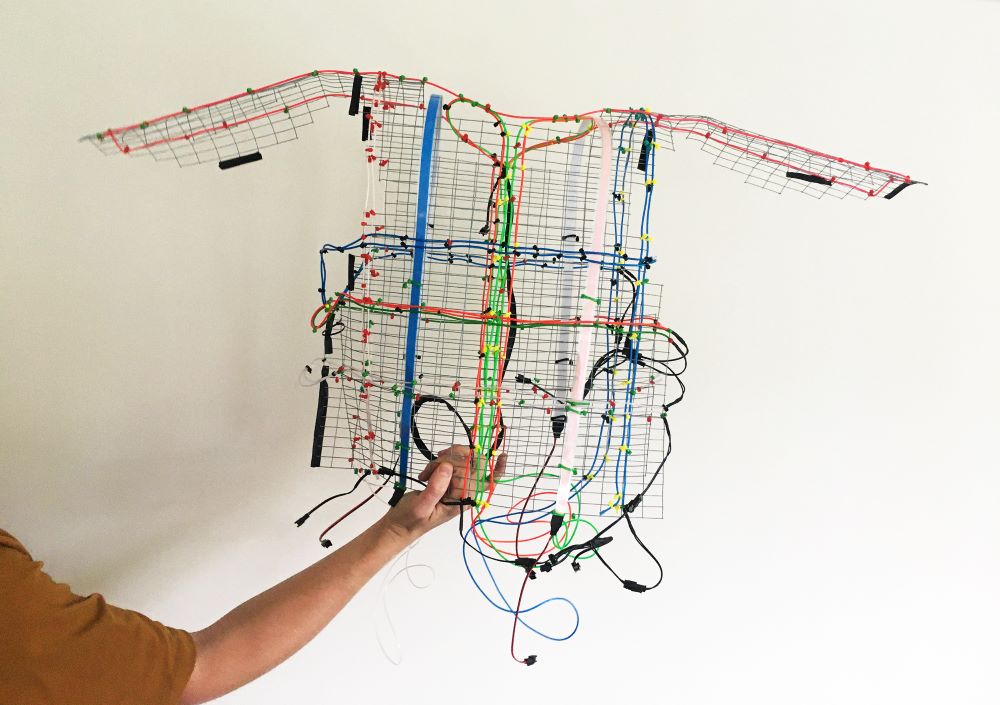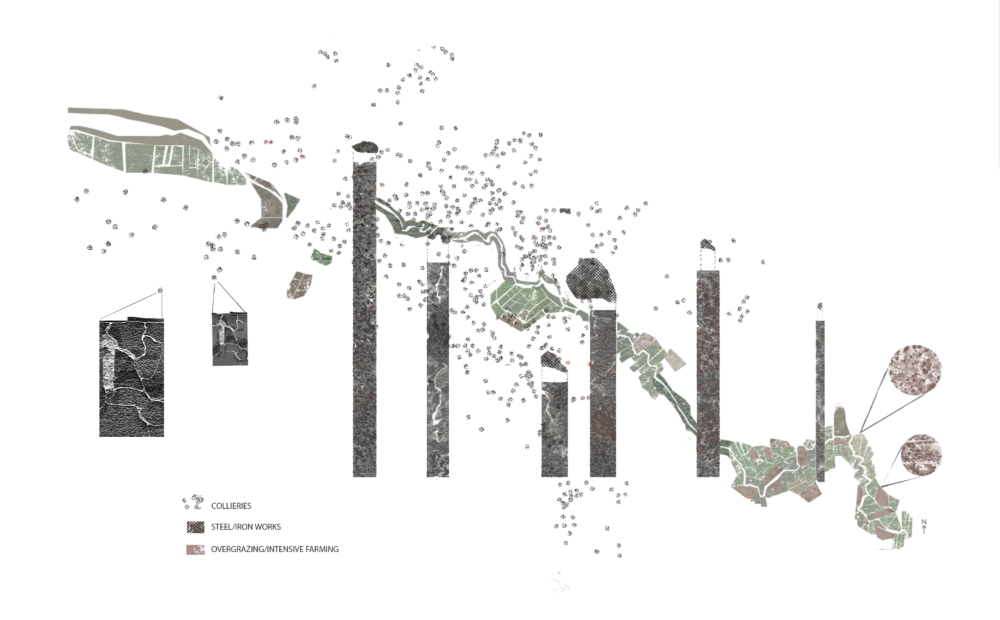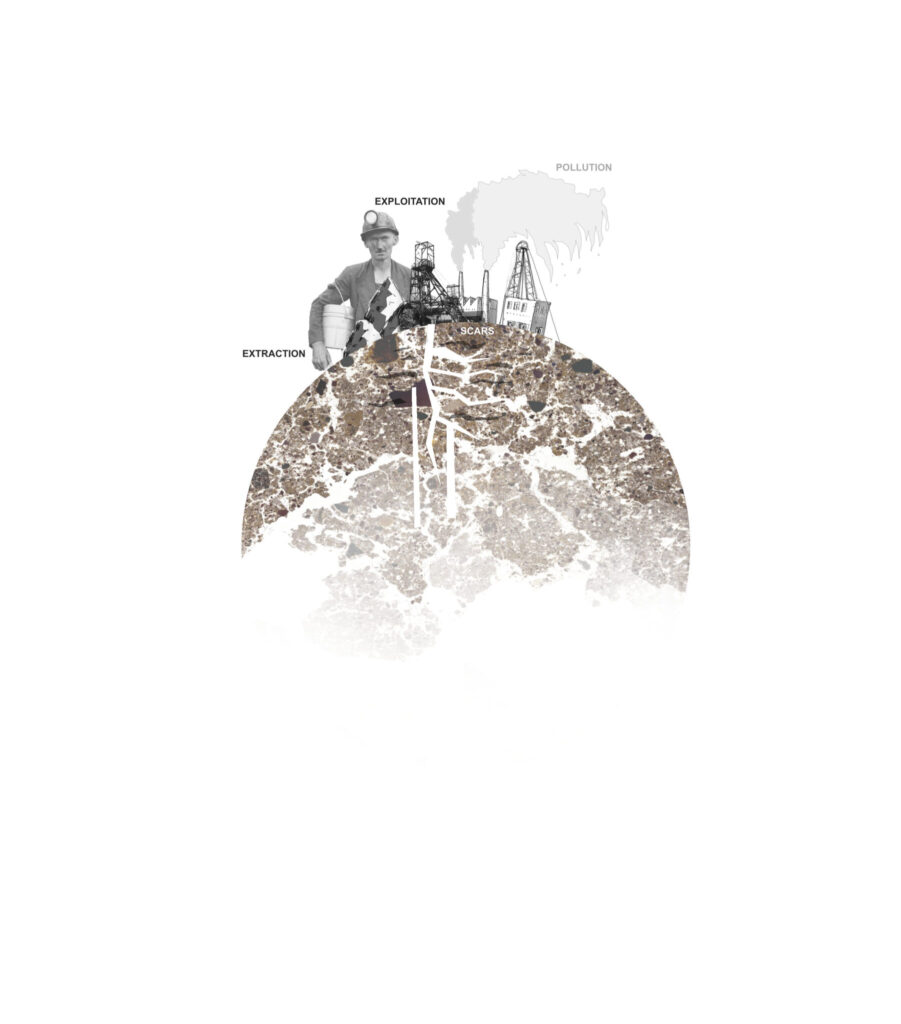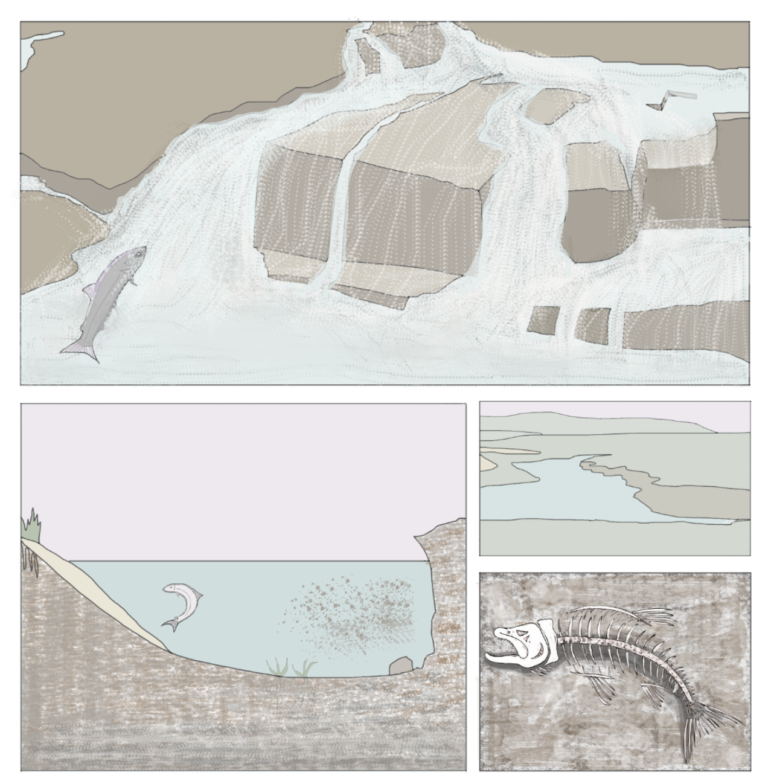
In this post, the authors describe the various approaches taken to deliver digital-first hybrid site-based teaching in a pandemic context and the opportunities and constraints associated with each approach…
Anticipation
The announcement of the requirement to plan for academic year 2020-21 according to a digital-first hybrid approach raised questions regarding the delivery of place-specific teaching, which is integral to ESALA’s accredited Architecture and Landscape Architecture programmes. The necessary but dramatic limitation on travel and visits affects the building of a collective in situ experience, project-based learning and construction, first-hand knowledges fundamental to our disciplines and of granular pacing of courses.
In order to reflect on how to best approach this shift, several hybrid-teaching working groups were created in summer 2020, each focusing on different aspects of ESALA’s teaching. Beyond the challenges which were presented to us, this offered a collaborative opening in our academic continuum which is usually too busy to enable cross-course sharing of good practice and pedagogical tools. Valuable hybrid teaching expertise also came from our colleagues within ESALA’s Design and Digital Media MSc / Diploma.
One of the hybrid-teaching reflection groups focused on site-based pedagogies. The aim of this cluster was to review the various approaches which could be adopted to deliver digital-first hybrid site-based teaching in a pandemic context, and to identify opportunities and constraints associated with each approach.
A variety of ‘distanced fieldwork’ models were discussed. The key focus for each model was to surface the shared terrain (either thematic or physical) which ESALA learning communities would be able to collectively engage with. For each model, potential opportunities and challenges were identified with regards to parity between on-campus and off-campus students, levels of skills and confidence which could be expected of students at different stages of their academic trajectories, and the role which peer-learning could play in supporting each approach. The resilience of each model in a potential full lockdown scenario was considered and key reflections pertaining to the spectrum of possibilities between mediated and unmediated site experiences also emerged. In situations when tutors would be putting together fieldwork material in advance, personal bias could come into play, but this could also allow students to potentially direct tutors (or local actors) to record and collect site material. Another possibility focused on asking students to choose sites wherever they would be located, which would enable them to foreground their cultural perspective and local expertise.
It was clear from the outset that refreshed and consistent health & safety guidance would need to be followed across ESALA but, beyond this, each course organiser would tailor their hybrid-teaching site approach to the requirements of their specific courses.
In practice
We are now in the thick of the semester, testing and adjusting models discussed over the summer in the contingent reality of our current teaching conditions. In the following examples offered by colleagues, we notice some emerging threads. We observe that the shift in teaching practice has prompted some colleagues to further inhabit the interstices between Architecture, Landscape Architecture and other disciplines (Fashion, Ecology, Film…etc) in order to surface distanced fieldwork methods at the edge of the traditional boundaries of our disciplines. The digital worlds in which we currently engage have reconfigured the way we design and communicate. The distanced nature of our site engagements has also prompted questions around the re-setting of our ethical position as designers. As some of us are deprived of a direct engagement with sites, we have had to think critically about in-directly engaging with and ‘reading’ sites through other beings and media in reconfigured practices of care and empathy.
In-situ fieldwork can be described as an embodied experience. Immersed in the site medium, the body of the designer, used as a primary medium for site exploration, interacts with myriads of forces and materials. Therefore, when thinking about distanced fieldwork (either actually removed from the site or within a site but observing a form of distancing), there is a need to rethink our relationship between sites and our bodies. This consideration is central to the second exercise of the MA/BA Architecture 3rd year Design Explorations Studio ARCHITECTURE BY YOURSELF, taught by Lecturer Moa Carlsson and Teaching Fellow Yorgos Berdos, in which the ‘site’ for design intervention was the interface between the human body and its environment. The task was to study and design that threshold, and to choreograph movements of the human body whilst simultaneously filtering the environment in controlled ways. Students were asked to design “wearable architectures” (Webb 1968) that would satisfy defined needs for social distancing and the prevention of airborne transmission in exterior public space. Students responded by designing innovative concepts that blended the boundaries between clothing and architecture, while considering in detail the filtration of air, sound, light, sight and touch through their body-architecture. In sum, this meant that the ‘field’ and ‘site’ they worked in/on was the experience of a person in the built environment (a psycho-physical space), rather than a physical geography.




At any given time, multiple bodies co-inhabit and co-author the infinite reshaping of our environment. The changing nature of a site and the subjective nature of each designer’s perception foreground the need for the ‘field’ to be perceived by numerous participants. The acquiring of knowledge at any stage of the design process, fieldwork included, must be the result of the designer’s critical position toward their own bias and we must also be mindful of marginalised voices. In a human-centered world, one could argue that more-than-human voices are the most neglected.
Distanced fieldwork prompts in MA/BA Landscape Architecture 2nd year Design 2A Studio SHIFTING LANDSCAPES, taught by Lecturer Anaïs Chanon and Ecologist John Darbyshire, invited students to reflect upon these questions by engaging in practices of care and empathy. Student were asked to produce drawings of the site from within, expressing its key existing components viewed through the lens of at least one more-than-human protagonist. In other words, students were asked to inhabit other beings in speculative written and visual fictions in order to formulate multi-layered readings of the landscapes they were exploring. As part of this exercise, they were asked to reflect on the values and limitations of fiction when giving a voice to other beings. When doing so, being aware of our bias, of our point of view as humans is crucial. The question of how we produce knowledge, information, data about a site is never neutral. With these reflections in mind, this exercise raised valuable questions as to how, as designers, we would tend to orchestrate the hierarchy of voices in our projects. Whilst students’ projects are still developing, we are observing the emergence of a strong sensitivity towards non-human communities , an approach which is reinforced by the presence of Ecologist John Darbyshire in this virtual studio.



Also reflecting upon biases and relationships between sites and designers, PG Master of Architecture (MArch) brief for the foundational work of one of the year-long design studios, COUNTRYSIDE led by Lecturer Chris French and design tutor Michael Lewis, outlined five ‘models’ through which the students might conduct Field Work: ‘Presence’, ‘Delegated’, ‘Curtilage’, ‘Co-Presence’ and ‘Detached’. Each of these offered a way of framing the relationship between the designer/architect (as either actor or specifier) and site. This builds on the discussions with ESALA staff over the summer but was framed slightly differently to suit the professional expectations/actions of an architect/architecture student. Each case aims to offer a consistent language built around the idea of actor or specifier, so that the student can fill one of these roles, embedding a suggestion of the implications of each of these models for how a project may be constructed.
The students are almost all working somewhere between the ‘Presence’, ‘Curtilage’ and ‘Detached’ modes, either working locally, surveying their sites in person, or making trips to study specific locations (as we are dealing with remote conditions this has been feasible), or working entirely from archival/found data. One student (of 24) has enlisted local help to gather some drone footage and to discuss the project, as in the ‘Delegated’ mode. Course tutors suspect students might start to see more of the ‘Co-Presence’ model as the projects develop.



References
Burns, Carol J. and Kahn, Andrea. “Why Site Matters”. In Site Matters, Design, Concepts, Histories and Strategies, edited by Carol J. Burns and Andrea Kahn, VII-XXIII. Routledge, 2005.
Burns, Carol J. and Kahn, Andrea. Site Matters: Strategies for Uncertainty Through Planning and Design. Routledge, 2020.
Gabrielsson, Catharina. (2009) ‘The necessity of distance’. Chaplin, S, Stara, A. eds. Curating Architecture and the City AHRA Critiques Series, London, Routledge. pp. 219-232
Swanton, Dan. “A Local Alternative to Field Courses”. Teaching Matters (blog). November 5, 2020. Accessed November 12, 2020. https://www.teaching-matters-blog.ed.ac.uk/a-local-alternative-to-field-courses/
Tait, Margaret. Where I am is Here, Ancona Films,1964. National Library of Scotland Reference number: 3703. [https://movingimage.nls.uk/film/3703 accessed 18 Nov 2020]
Webb, Michael. “Comfort for Two: The Cushicle and Suitaloon.” Archigram 8, 196
Authors
Suzanne Ewing
Suzanne Ewing is Professor of Architectural Criticism. From 2019-2020 she has been a secondee at IAD, exploring cultures, habits and constituents of ‘the project’ and project-based learning in higher education.

Anaïs Chanon
Anaïs Chanon is a Landscape Architect and Lecturer at the Edinburgh School of Architecture and Landscape Architecture. She holds a Diploma in Art and Design from the Duperré National School of Design (Paris, France) and a Masters in Landscape Architecture from the National School of Landscape Architecture (Versailles, France). Anaïs co-founded GRAFT, an award-winning landscape architecture collective based in Scotland and France.
 Ruxandra-Iulia Stoica
Ruxandra-Iulia Stoica
Dr Ruxandra-Iulia Stoica is Senior Teaching Fellow in Architectural Conservation and Depute Director of the Scottish Centre for Conservation Studies in the Edinburgh School of Architecture and Landscape Architecture, Edinburgh College of Art. An architect and urbanist, Ruxandra specialises in Urban Conservation and is particularly interested in the interdisciplinary research methodologies needed for this approach, as well as the pedagogy of conservation training in general.
 Moa Carlsson
Moa Carlsson
Dr Moa Carlsson is a Lecturer in Architectural Design, researching histories of mapping and information technology in architecture and urban planning.
 Chris French
Chris French
Dr Chris French is a Lecturer in Architecture and Contemporary Practice, exploring the relationship between the city and architecture, and agricultural and ex-urban landscapes as framed by critical representational regimes.
Elinor Scarth
Wider hybrid site-based pedagogies reflection group contributors (in alphabetical order):
Michelle Bastian, Moa Carlsson, Anaïs Chanon, Suzanne Ewing, Kenny Fraser, Chris French, Laura Harty, Francisca Lima, Lisa Mackenzie, Ross McLean, Chris Rankin, Elinor Scarth and Ruxandra-Iulia Stoica.


